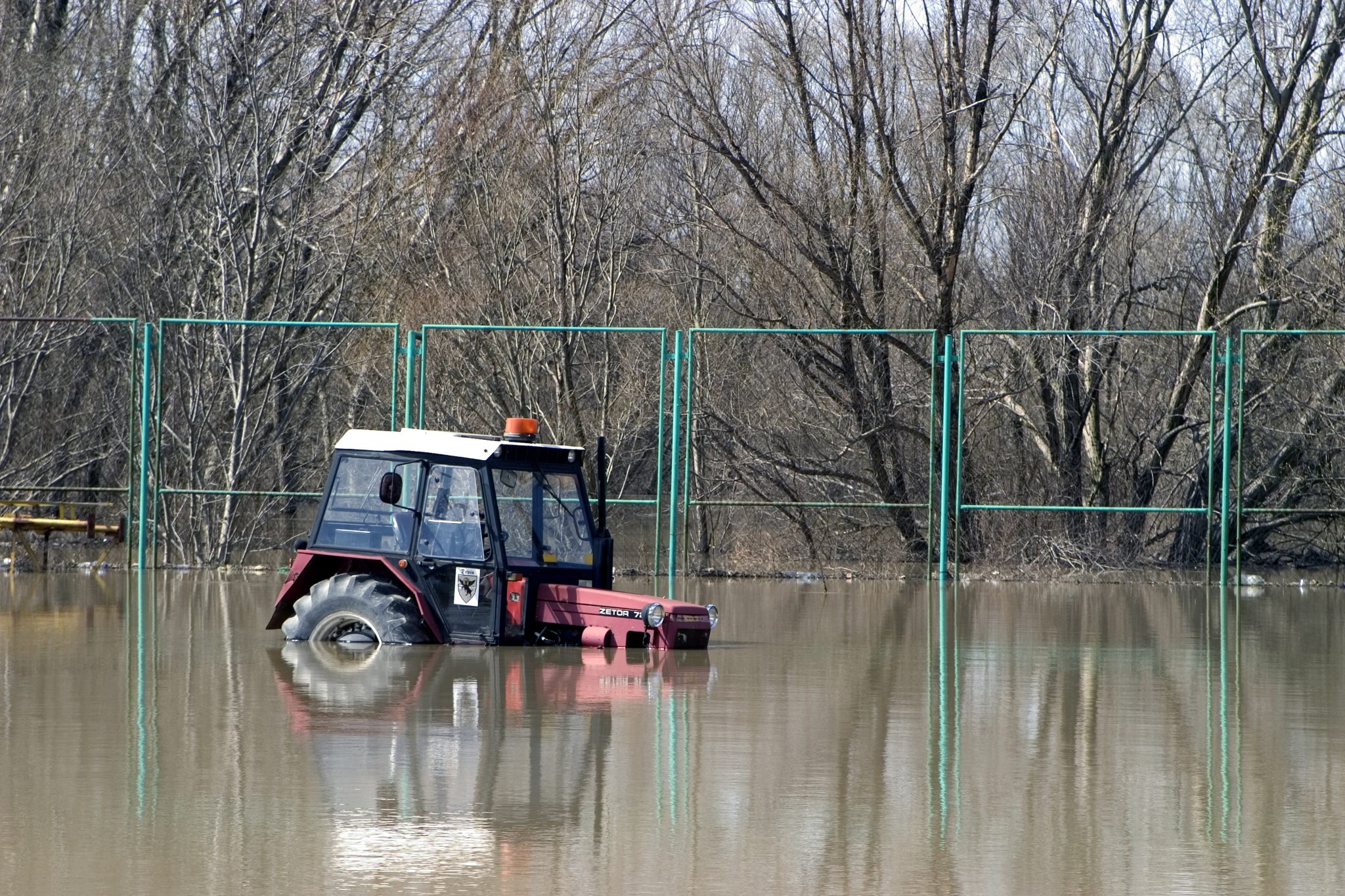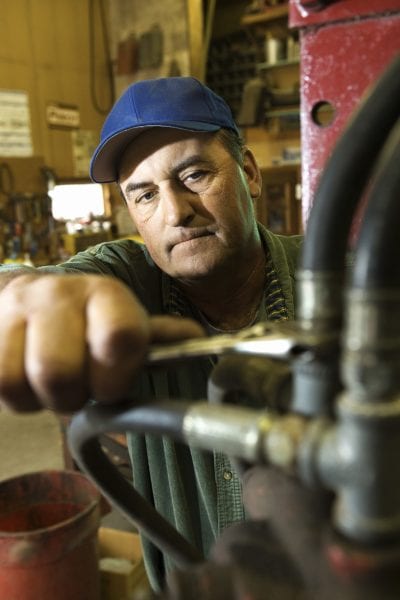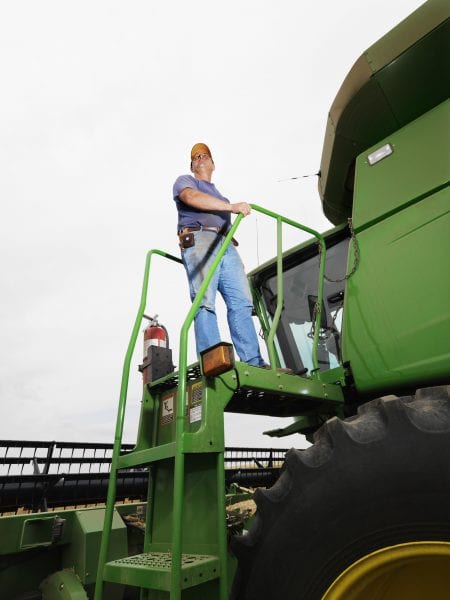Emergency Handbook

Tips on Cleaning and Reconditioning
Check your insurance requirements first before operating or attempting to clean vehicles, equipment, or tractors. File appropriate claims.Then clean tractors, trucks, and farm equipment. Delay makes dirt and silt harder to remove and may cause considerable rusting and corrosion. If you use farm vehicles and equipment before proper reconditioning, you may seriously damage them.
Have your dealer or another expert recondition engines. Do not try to move or start an engine that has been underwater until the engine has been cleaned and reconditioned. Dirt will damage bearings and precision parts. Clean and service all equipment, with special attention to parts that were below water level. If saltwater flooded the equipment, wash with fresh water.
Emergency Cleaning
If you must use the tractor or engine immediately, or if you think the cost of professional reconditioning is not worthwhile, use the following procedure. This procedure is not thorough enough, however, to prevent possible damage or need for overhaul in the future.
- Clean exterior thoroughly with fresh water/soapy water and a pressure washer. Scrub greasy deposits with solvent.
- Remove spark plugs or fuel injectors, air cleaner, intake manifold, and carburetor. Clean these parts thoroughly with solvent. Discard and replace water-soaked paper air filters.
- Operate the engine slowly without an air filter.
- Drain the crankcase. Flush the crankcase and refill. Also disconnect gasoline lines, blowing them out with compressed air. Do not disconnect diesel lines. Inspect diesel fuel system to see if water is present in the tank and filters. If water is present, have trained service personnel clean the fuel system.
- Crank the engine slowly with spark plugs or fuel injectors removed to force water out of cylinders. Squirt light lubricating oil into each cylinder, and let it stand for about 5 minutes. Then crank the engine slowly to lubricate cylinder walls and rings.
- Replace all filters—engines, fuel, and hydraulic.
- Completely flush out the fuel system—tank, pump, and lines. Be extremely careful to avoid fire danger.
- Clean starter and generator or alternator. Have an expert service them.
- Drain and flush the transmission and final drive with solvent. Refill with new, clean oil. Check for water in oil compartments by loosening drain plugs until all water drains out.
Wheel Bearings, Cooling Systems, and Batteries
- Remove and clean unsealed wheel and track bearings with solvent. Lubricate and replace the bearings. Factory-sealed bearings should not need cleaning if the seal is unbroken.
- Clean all debris from the radiator, and wash with soapy water. Most cooling systems are sealed and would not need flushing, but you should change or flush and replace with new antifreeze.
- Replace the battery, if necessary. If it was submerged, it will probably need to be replaced.
Starting and First Operation
Examine the machine and turn it over by hand after you have cleaned and replaced all parts. If it turns freely, it is probably ready for operation. Start the engine and operate the machine at low speed until you are sure all parts are working smoothly.
If there is dirt in the crankcase, transmission, or gear train, change the oil and oil filter after operating the machine for a few hours. Using fresh lubricant is cheaper than paying for more repairs.
Used by permission of the Mississippi State University Extension Service.
Use pesticides only according to the directions on the label. Follow all directions, precautions, and restrictions that are listed. Do not use pesticides on plants that are not listed on the label. Trade and brand names used are given for information purposes only. No guarantee, endorsement, or discrimination among comparable products is intended or implied by the Alabama Cooperative Extension System. This publication is for information purposes only and should not be a substitute for recommendations or treatment by a health care provider.



